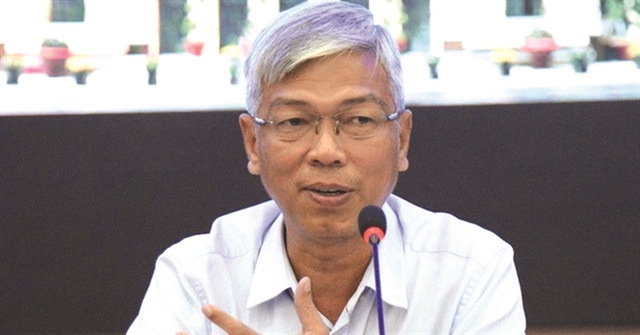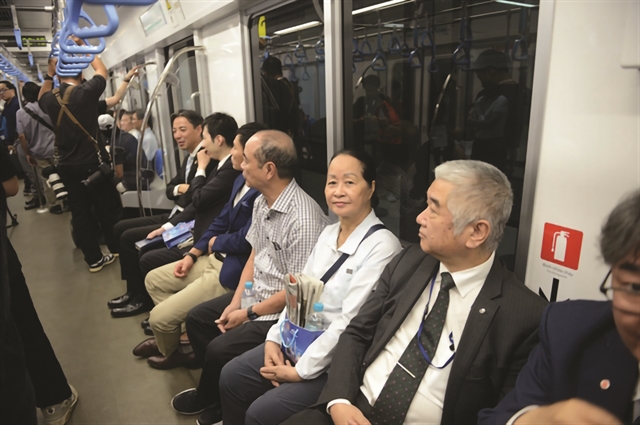 Opinion
Opinion

 |
| Võ Văn Hoan, vice chairman of HCM City People’s Committee. VNA/VNS Photo |
HCM City has undergone a significant transformation over the past 50 years, emerging from the shadows of conflict to become one of Southeast Asia’s most dynamic metropolises.
On the occasion of the 50th anniversary of South Việt Nam liberation and national reunification, Việt Nam News reporter Bồ Xuân Hiệp speaks with Võ Văn Hoan, vice chairman of the municipal People’s Committee (Administration), about the city’s achievements since 1975 and the vision for the future.
Can you share your view about how HCM City has developed since Việt Nam’s reunification in 1975?
In 1975, when the war ended, HCM City, formerly known as Sài Gòn, was a city grappling with the aftermaths of conflict. Infrastructure was undeveloped, the economy was in disarray, and social services were stretched thin.
However, the determination of its people paved the way for recovery. One of the most significant achievements in HCM City’s post-reunification era has been its economic growth.
An important moment came in 1985 when 70 American business representatives visited, signalling the start of a new chapter in global engagement for us. The shift towards a market economy in the late 1980s, known as "Đổi Mới" (Renewal), catalysed this transformation.
HCM City is currently home to thousands of businesses, startups, and multinational corporations. It has positioned itself as the economic powerhouse of Việt Nam, contributing nearly 23 per cent of the national GDP.
The city has established solid relationships with 58 cities worldwide and is actively involved in various international organisations.
What are the key sectors that have driven this development?
Over the past 50 years, HCM City has transformed into a vibrant metropolis driven by key sectors such as manufacturing, services, technology, and logistics. Its manufacturing sector, focused on textiles, electronics, and food processing, has generated jobs and supported local and international markets.
As Việt Nam’s largest economic hub, the city enjoys a dynamic retail and wholesale trade landscape due to its strategic location and advanced logistics. The services sector, including finance, banking, real estate, and tourism, has also grown significantly.
In addition, the city’s transport infrastructure has improved with developments such as the first metro line, which opened recently after 12 years of construction, marking a step toward a modern public transit system.
The city is also becoming a thriving tech hub, focused on science, technology, and innovation to drive growth. It aims to launch 5,000 new start-ups by 2030 and already hosts over half of the country’s start-ups.
Ranked 111th in the 2024 Global Startup Ecosystem Index, the city stands third in Southeast Asia after Singapore and Jakarta.
It also aims to reach the top 100 by 2030 and emerge as a regional start-up powerhouse.
 |
| Passengers on HCM City’s inaugural metro train, which began operation at the end of 2024. — VNS Photo Bồ Xuân Hiệp |
What role does culture play in the development of HCM City today?
Beyond economic achievements, HCM City has also seen a cultural renaissance.
Our rich history and vibrant culture are what make HCM City unique. The city is actually a melting pot of diverse influences, showcasing a blend of traditional Vietnamese culture and modern global trends.
Festivals, art exhibitions, and culinary events abound, attracting both locals and tourists. Historic and cultural landmarks such as the War Remnants Museum and Reunification Palace honour the past while its contemporary galleries and theatres highlight the innovative spirit of the youth.
In addition, cultural exchange programmes celebrate the diversity of its ethnic communities, enriching the social fabric and promoting inclusivity.
What are the major challenges facing the city in the next decade?
Despite these successes, HCM City is facing various challenges, including traffic congestion, pollution, and housing shortages, among others.
As the population grows rapidly, many families struggle to find affordable housing, putting pressure on the city’s infrastructure.
The increase in vehicles has led to frustrating traffic jams that disrupt daily life, making commutes longer and more stressful.
In addition, pollution and climate change are pressing concerns that demand green solutions for a healthier future.
Healthcare services may also be stretched thin as more residents seek care, highlighting the need for improvement in medical facilities.
We are working on comprehensive plans to improve public transport, enhance green spaces, and provide affordable housing.
One of the city’s most important tasks is to address the disparities between different economic groups to ensure that everyone has access to opportunities and resources.
In your opinion, what does the future hold for the city?
We envision a city that thrives mainly on innovation and inclusivity.
It is focused on leveraging technology to improve governance and service delivery, aiming to create a more transparent and efficient administrative system. Our mission is to empower our citizens, promote equality, and ensure that the benefits of growth are shared by all.
The city aims to be a leading economic, financial, and innovative hub in Southeast Asia by 2045, enhancing its global presence through creative diplomacy.
With a strategic location, youthful workforce, and expanding consumer market, the city also aims to become an International Financial Centre (IFC) over the next five years.
With a rich history, a vibrant economy, and a commitment to sustainable development, the city is poised for a promising future where there is no one left behind. VNS
 |
| Local and foreign tourists at the War Remnants Museum in HCM City, one of its main cultural landmarks, honouring the past and history of the nation. VNS Photo Bồ Xuân Hiệp |




